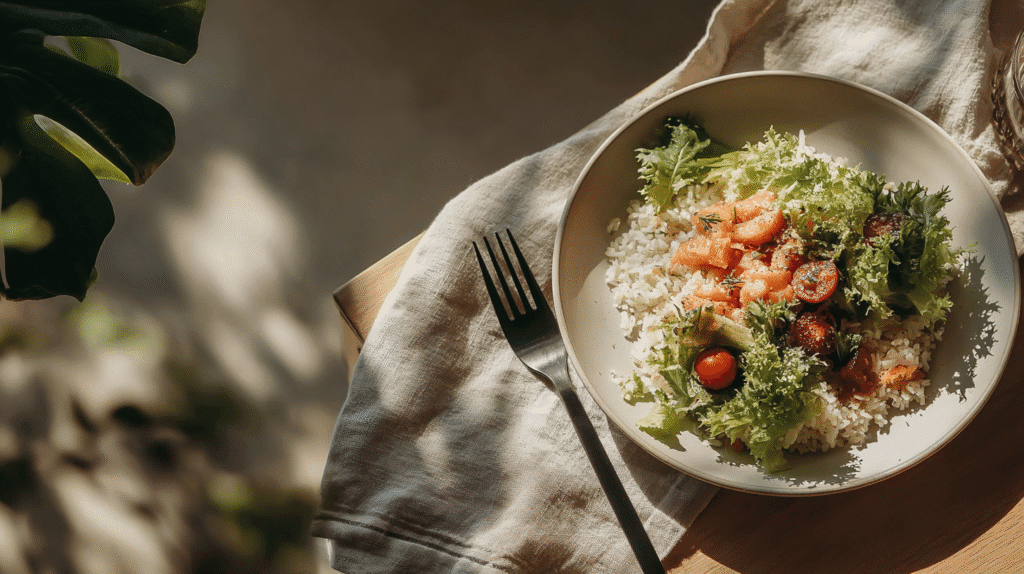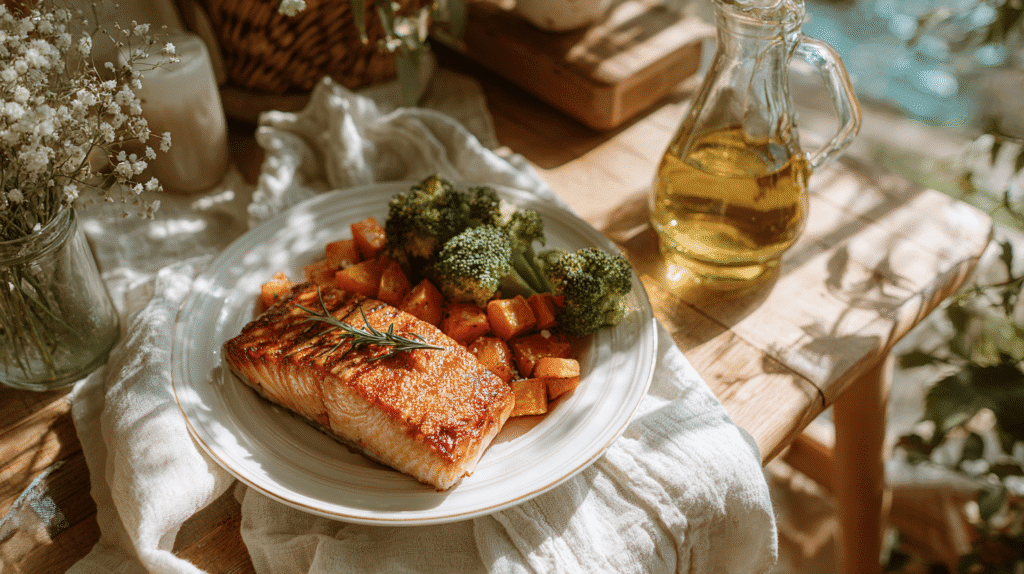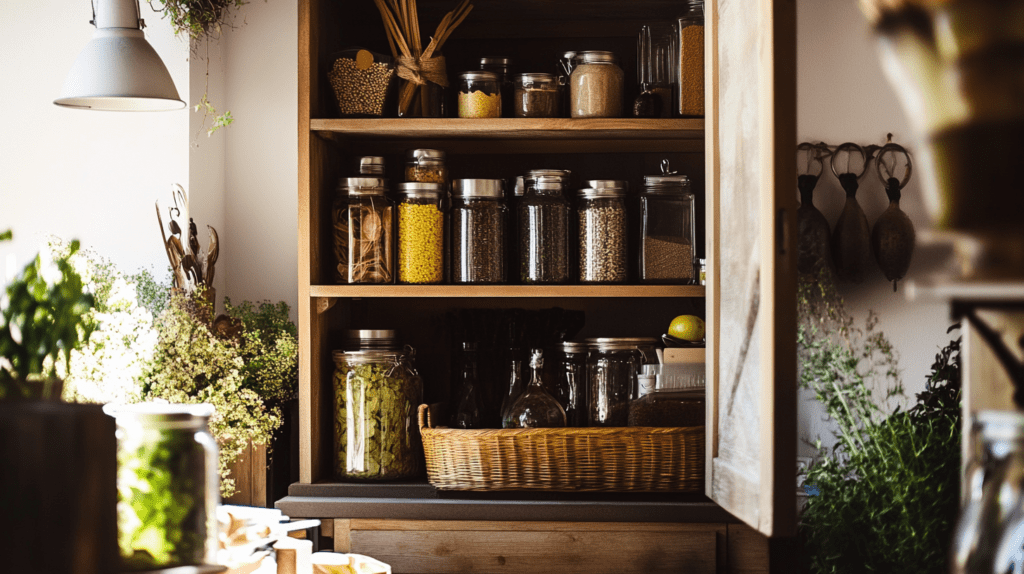This post may contain affiliate links, including those from Amazon Associates. If you make a purchase through these links, I may earn a commission at no additional cost to you. Learn more about our affiliate policy.
Some mornings I catch myself remembering how complicated I once made food.
I would stand in the grocery store staring at endless packages, comparing labels, and wondering why eating well always seemed to cost more. Over time, I learned that clean eating doesn’t have to be expensive or overwhelming.
It can be simple, nourishing, and kind to your budget when you shift the focus toward planning, whole foods, and using what you already have.
Building a clean eating meal plan on a budget is about more than saving money.
It’s about creating a rhythm that feels steady, predictable, and nourishing. When you know what meals you’ll cook, you avoid the stress of last-minute choices, reduce waste, and make the most of every dollar. Here’s how I approach it.
Start by looking at what you already have
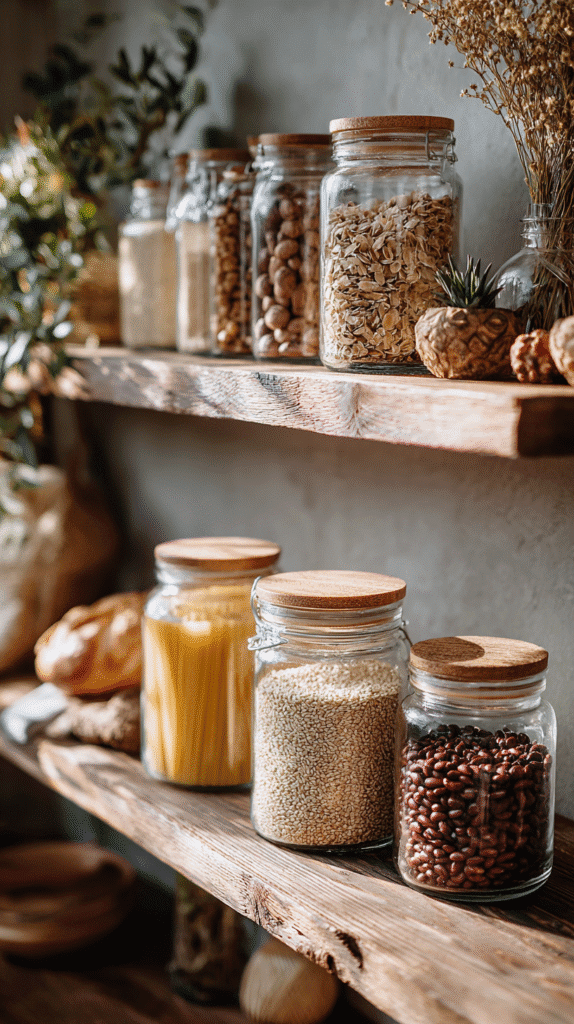
Before you write a single list or shop a single sale, take inventory of your pantry and freezer.
Whole grains, canned beans, frozen vegetables, and herbs often get forgotten in the back. Pull them forward and plan meals around them.
A bag of rice and a few cans of beans can form the base for multiple dinners when paired with fresh seasonal produce.
This simple habit keeps you from buying duplicates and helps you notice what staples you rely on most. Over time, you’ll start to keep a steady rhythm of core ingredients always on hand, which makes clean eating feel easier and more affordable.
Plan your meals with simplicity in mind
A meal plan doesn’t need to be complicated. In fact, the simpler the plan, the more likely you’ll stick with it. Choose one or two breakfasts you can rotate through the week, a handful of lunches that are easy to prep ahead, and three to four dinners you can stretch into leftovers.
I like to focus on whole, minimally processed foods that form a nourishing base like grains, beans, vegetables, fruits, and proteins in their simplest form.
If you’re just starting, you might find my guide to clean eating meal planning for beginners helpful. It walks through how to create an easy foundation without overwhelm.
When planning dinners, I often choose one “batch-friendly” meal each week like soup, roasted vegetables, or a pot of beans that can be repurposed into lunches or new dinners later in the week.
This reduces cooking time and lowers costs since one set of ingredients stretches across multiple meals.
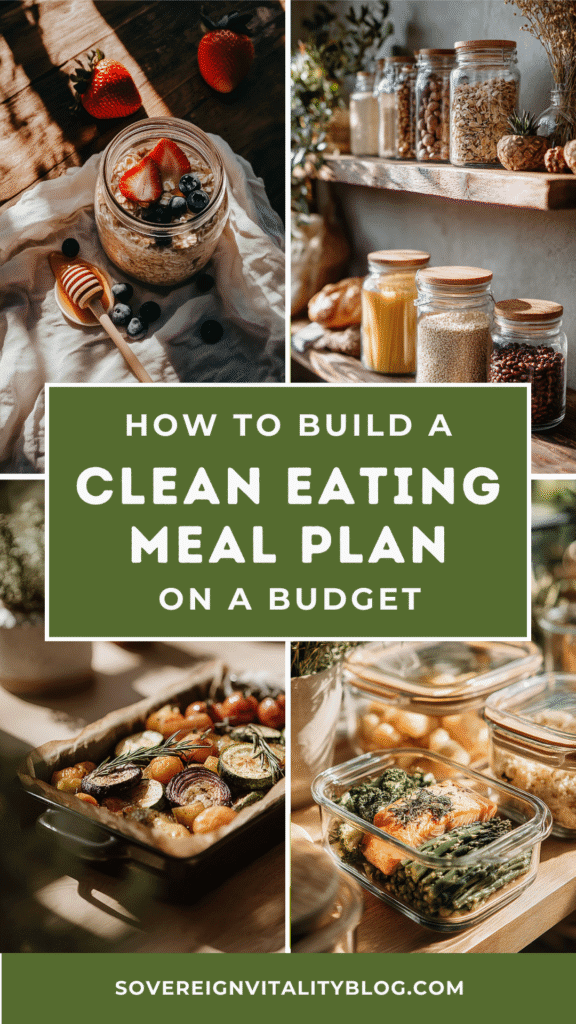
Build a smart grocery list
Once you’ve planned meals, write a list based only on what you need. This is where savings happen. A list helps you stay focused and avoid impulse buys, which often come in the form of pricey processed foods.
I prioritize items that are versatile and nutrient-dense: oats, brown rice, quinoa, lentils, frozen berries, leafy greens, and in-season vegetables.
These ingredients can be used in multiple ways and offer the most nutrition per dollar.
Buying store brands or from bulk bins when available can cut costs further. And don’t overlook frozen produce, it’s often picked at peak ripeness, lasts longer, and is usually cheaper than out-of-season fresh items.
Shop with the seasons
One of the easiest ways to lower costs is to align your meals with the seasons.
In autumn, root vegetables like carrots, sweet potatoes, and squash are abundant and inexpensive. In summer, berries and tomatoes are plentiful. Eating seasonally not only saves money but also brings variety to your diet throughout the year.
Farmers’ markets, local co-ops, or even the discount bin at your grocery store can be treasures. Produce with small imperfections is often sold at a fraction of the price, yet still perfectly good for cooking.
Cook in batches and embrace leftovers
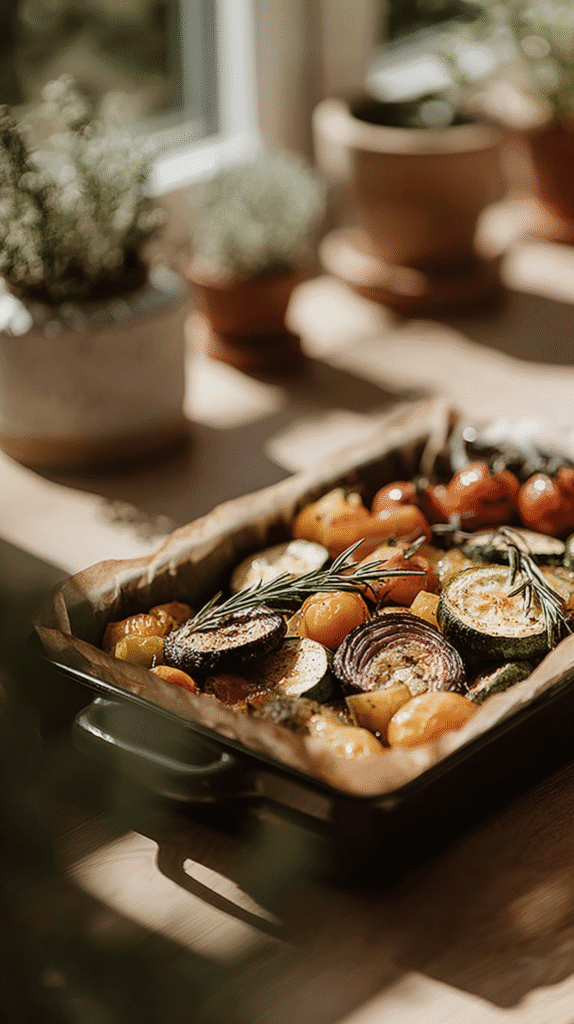
Batch cooking changed everything for me. Instead of making a new meal from scratch every night, I cook larger portions of a few base items: a tray of roasted vegetables, a pot of beans, or a batch of overnight oats.
Then I use those building blocks in different ways throughout the week.
For example, roasted sweet potatoes can top a salad, fill a grain bowl, or be blended into soup.
A pot of beans can become tacos, wraps, or a hearty stew. Cooking once and eating twice, or even three times, saves both money and energy.
Use flavor wisely
Clean eating doesn’t mean bland eating. Instead of buying pre-packaged sauces or seasonings, I rely on simple, affordable staples like garlic, onion, citrus, fresh herbs, and dried spices. They stretch far, add depth, and keep meals interesting without extra cost.
If you enjoy experimenting, try growing a few herbs at home. Even in small spaces, a pot of basil or parsley on the windowsill offers fresh flavor that elevates simple meals.
For inspiration, take a look at these indoor vertical herb garden wall ideas. Fresh herbs not only brighten food but also connect you to the process of growing what you eat.
Focus on affordable proteins
Protein often feels like the most expensive part of clean eating, but it doesn’t have to be.
Plant-based sources like beans, lentils, eggs, and tofu are affordable and versatile. If you include meat or fish, choose budget-friendly cuts or buy in bulk and freeze what you don’t use right away.
Pair smaller portions of animal protein with beans or vegetables to stretch them further while still feeling satisfied.
Reduce waste wherever possible
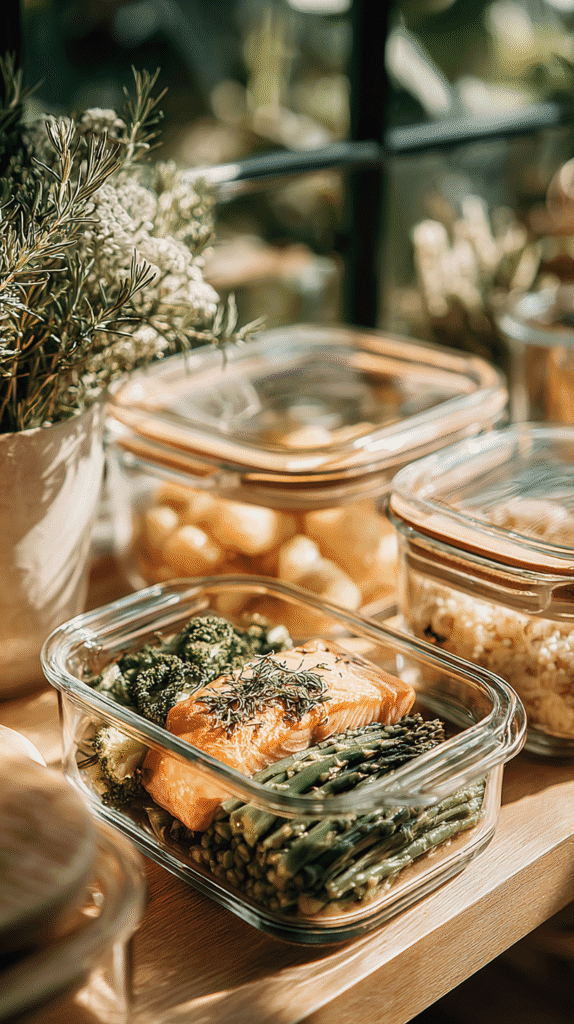
Wasted food is wasted money. To avoid spoilage, I plan perishable items early in the week and rely on frozen or sturdier foods (like root vegetables and grains) later. Leftovers are stored in clear glass containers so I can see what needs to be eaten.
Soups, stir-fries, and grain bowls are excellent catch-all meals for odds and ends in the fridge. I also keep a freezer “scrap bag” of vegetable peels and herb stems to make broth, which becomes a base for other budget-friendly meals.
Keep your plan flexible
Even with a meal plan, life happens. Some nights you’ll feel like cooking, and some nights you won’t. The goal isn’t rigid perfection but a rhythm that makes eating well easier and more affordable.
A stocked pantry, a few prepared staples, and a short list of go-to meals are often enough to keep you on track.
When you want variety without extra cost, try exploring different flavor profiles with the same base ingredients. Oats can be sweet with fruit and nuts or savory with greens and a soft-boiled egg.
Rice can become a stir-fry, a soup base, or a burrito bowl. Simple swaps create the sense of something new without requiring extra spending.
Sample budget-friendly clean eating day
To show how this looks in practice, here’s one of my favorite simple days:
- Breakfast: Overnight oats with frozen berries and a sprinkle of cinnamon
- Lunch: Lentil and vegetable soup with a side of whole grain toast
- Snack: Apple slices with peanut butter
- Dinner: Grain bowl with brown rice, roasted sweet potatoes, beans, sautéed greens, and a tahini-lemon drizzle
Every ingredient is affordable, versatile, and nutrient-dense. Nothing goes to waste, and each meal feels satisfying.
Closing reflections
Clean eating on a budget is not about restriction—it’s about rhythm, intention, and choosing foods that nourish you deeply without draining your resources.
When you take stock of what you have, plan with care, shop seasonally, and use simple building blocks, you create a meal plan that supports both your health and your wallet.
Start with one week. Write down three dinners you can stretch into leftovers, make a simple list, and notice how it feels. Over time, these small steps become second nature.
You’ll discover that eating clean and well doesn’t require spending more—it simply asks for a little more presence and planning.

